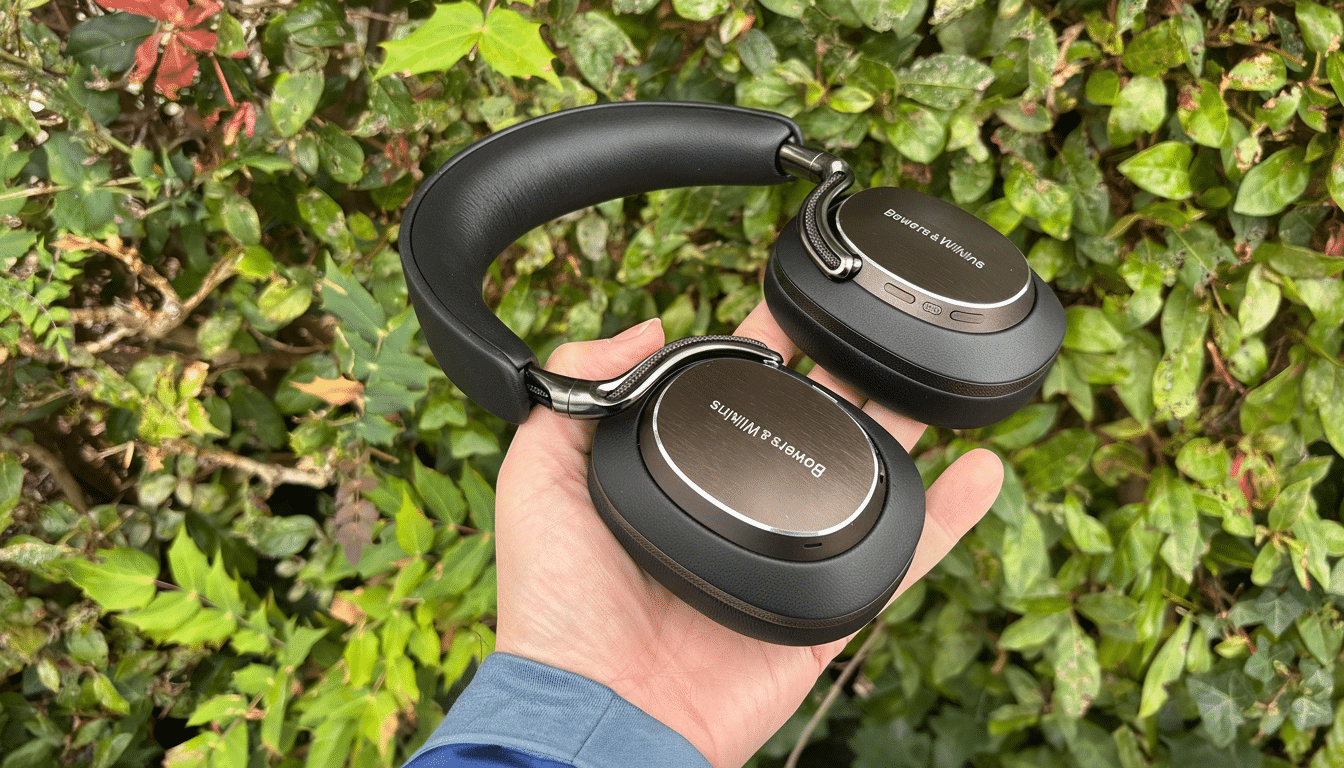Bowers & Wilkins’ new Px8 S2 lands firmly in the lap of listeners who obsess over mastering-grade detail and care little about convenience.
There’s a lot to like about these wireless over-ears at $799, including reference-class sound reproduction (whatever that means), a focus on premium-grade materials, and a willful rejection of some popular features. After testing them out early, they look and feel like a statement product — and, critically, they sound like one too.

Think of this as more a first verdict than a full lab report. The Px8 S2 sound richly tonal and look impressively industrial, though noise-canceling performance is a notch removed from the category’s most effective suppressors. If fidelity to the original is your top priority and you put design second, they are already compelling.
Design and build: luxury you can touch and feel
The Px8 S2 are unrestrainedly premium. The headband and ear pads are covered in full-grain Nappa leather, while machined aluminum hardware gives the yokes and sliders a satisfying sense of heft. The very fact that the braided lead between cups is discreet signals a level of attention to detail seldom found in mainstream flagships.
They’re 0.68 pounds — heavier than plastic-heavy rivals, though well balanced, with clamping force that feels not punitive, but secure over long stretches. The aesthetic is stripped-down and timeless, whether you choose Onyx Black or Warm Stone — more design object than gadget. Against many competitors’ largely plastic construction, the Px8 S2 feel built for longevity as well as looks.
Sound first: no resolution gimmicks, just fidelity
Pulling the engine along are a pair of 40mm carbon dome dynamic drivers. Bowers & Wilkins is hoping for true high-fidelity playback with up to 24-bit/96 kHz support using aptX Lossless or wired digital audio, according to the company. The company says its goal is to replicate what the original mix sounded like — no added coloration, no virtualized staging.
Early listening bears that out. Transients are tight, imaging is stable, and bass comes with texture instead of boom. Complex tracks — Radiohead’s multi-layered orchestrations, the vocal dynamics of Florence + The Machine — remain articulate at low and high volumes. Dense, old-school pop like Michael Jackson’s output reveals how the Px8 S2 manage to retain microdetail without running away and sounding analytical or fatiguing.
Codec support covers aptX Lossless, aptX Adaptive, aptX HD and aptX Classic, AAC, and SBC via Bluetooth 5.3. There’s no LDAC, and there’s no spatial audio. That’s an intentional decision: Bowers & Wilkins emphasizes purist stereo fidelity over virtualized sound, a position the company has repeated in press briefings. Qualcomm documentation says that aptX Lossless requires a Snapdragon Sound chain end-to-end; iPhone users instead fall back on AAC, which still sounds great here but won’t hit the same bit depth and rate. To achieve bit-perfect playback, digital audio can flow through the USB‑C jack only; there’s no standard 3.5mm analog jack.

Active noise canceling: very good, not savage
The Px8 S2 feature eight microphones for ANC and voice pickup, while passive isolation is decent too courtesy of the pads and clamp.
On trains and in offices, the headphones quiet low-frequency rumble and HVAC hiss quite convincingly. But even then, Bose’s most recent QuietComfort models and Sony’s WH‑1000XM lineup continue to set the mark in terms of maximum quiet in independent tests by outlets like RTINGS and SoundGuys.
If tuning out on long-haul flights is your main concern, those brands are still ahead of the curve. If clean, naturally voiced sound presentation is your primary concern and/or you’re not interested in what the ANC does for timbre, the more restrained approach of the Px8 S2 gives more than it takes.
Connectivity and everyday use: pairing and calls
Bluetooth 5.3 offers a reliable connection, and multipoint pairing lets you easily switch between two devices. They pick up voices well in a quiet room and remain comprehensible outside, with the same caveats any headset will have about a strong wind. The compact carrying case is nicely finished, and it gives you that premium feel.
One caveat for prospective buyers: to take advantage of the full promise of 24-bit/96 kHz wireless, you’ll need a mobile phone or other source device that supports Snapdragon Sound with aptX Lossless. And if not, you’re still getting a cleaner, coordinated sound over AAC or aptX Adaptive — it’s the headline bitrates you’re losing out on.
Early verdict: a purist’s flagship, for the wireless crowd
The Px8 S2 are clearly catering to that discerning listener who prizes faithful reproduction, quality materials, and tasteful design. They offer class-leading construction and mature, revealing sound that will flatter good recordings without the aid of DSP theatrics. They also miss a couple of buzzwords — spatial audio, LDAC — and their ANC doesn’t topple the best from Sony or Bose.
At $799, value is in the eye of the beholder. For audiophiles who have a hi‑res chain or for those people who have always wanted their wireless headphones to feel like the kind of heirloom product they pass down through generations, the Px8 S2 deserve their place in your life. For those of us jetting around the world chasing more bang for our sound-canceling buck, the usual suspects are the smarter buys. Either way, Bowers & Wilkins has made a supremely confident, beautifully engineered flagship that sounds as expensive as it looks.

